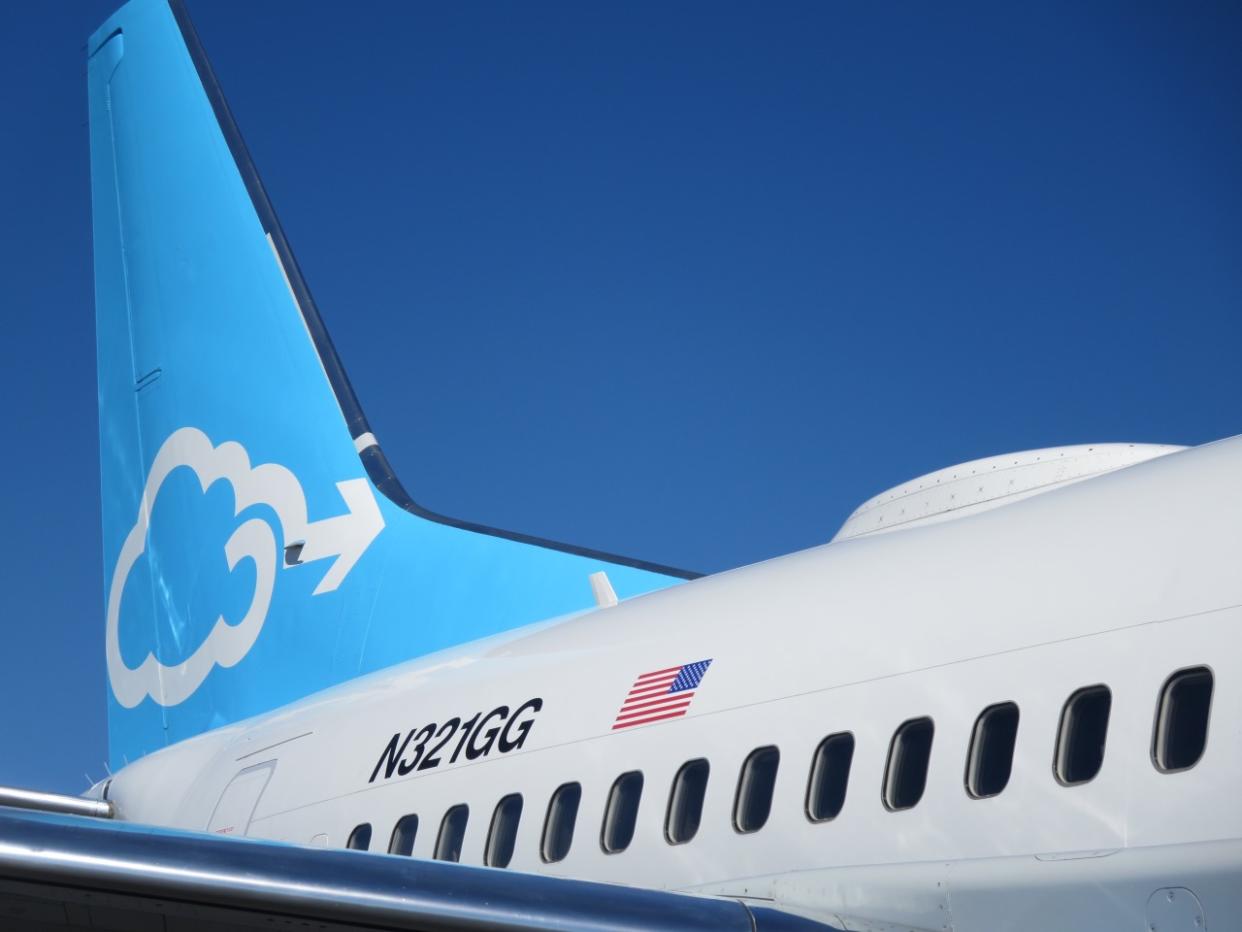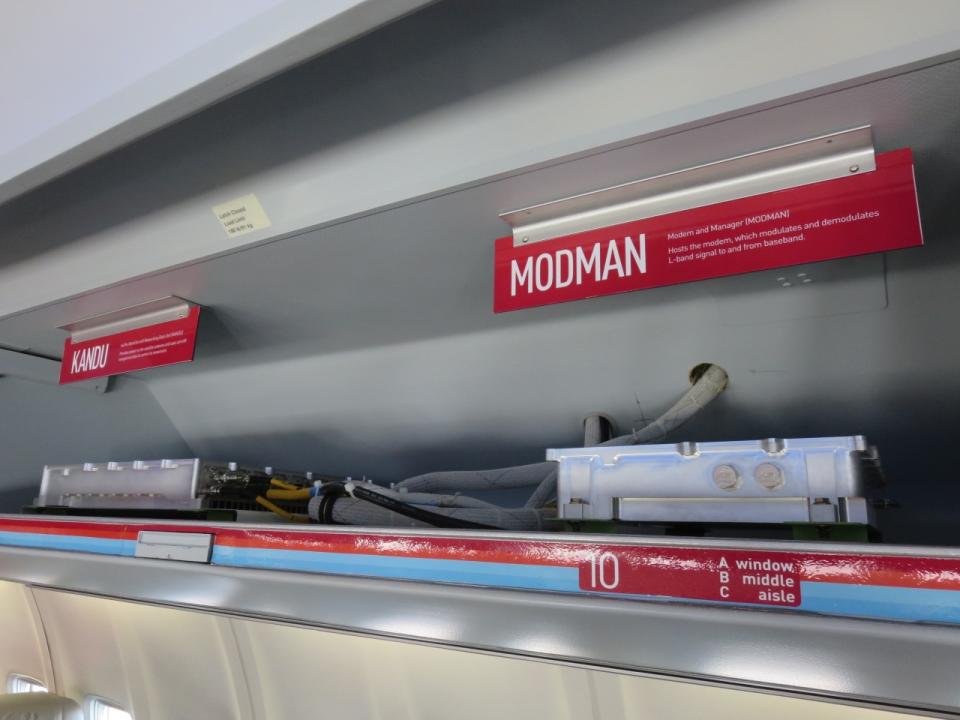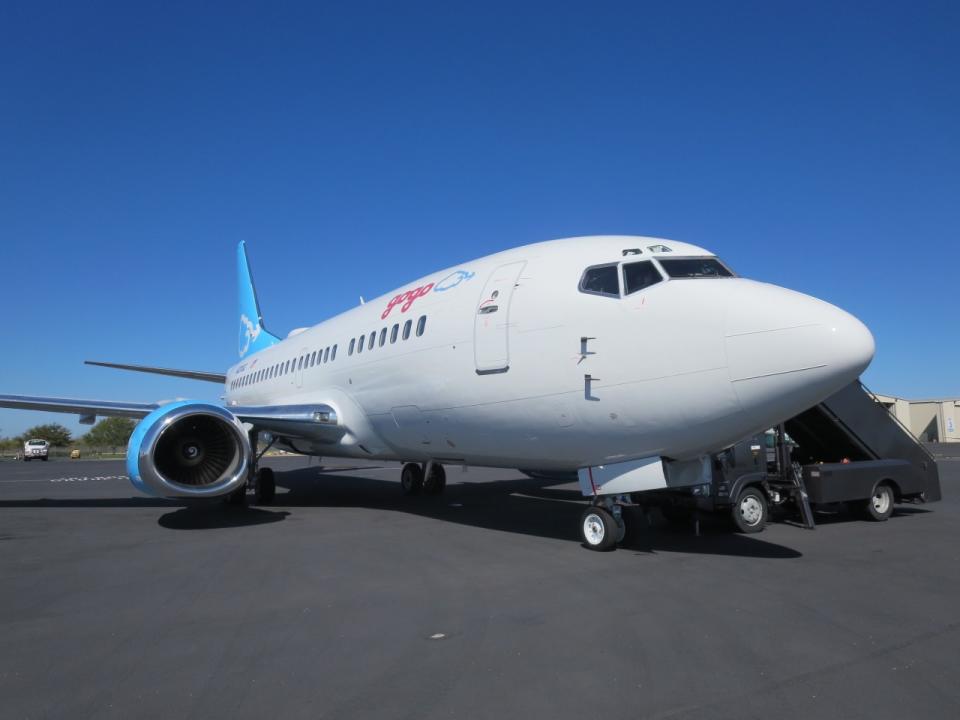Taking off soon: Gogo promises in-flight Wi-Fi that you won’t hate

(Images by Rob Pegoraro/Yahoo Tech)
I took a flight to nowhere Monday just so I could get on the Internet. I didn’t have to pay for the flight or the brunch beforehand, but I didn’t earn any frequent-flier miles, either.
That’s not my usual pattern of air travel, but the plane was Gogo’s Boeing 737 testbed, and the Internet access came from that Chicago inflight-connectivity firm’s next-generation, satellite-based Wi-Fi system onboard. I boarded the flight — scheduled to take off from Austin-Bergstrom International and then return to that same airport an hour later — to see whether that system can fix what ails most in-flight Wi-Fi today.
Bad bandwidth
Gogo is readying this “2Ku” satellite Wi-Fi because its first-generation air-to-ground system regularly gets crushed by demand. Airlines have attempted to suppress usage by hiking prices for peak routes and flying times — they can hit $40 for a Monday flight from New York to San Francisco — which is about as popular as Uber’s surge pricing on New Year’s Eve.
The situation is bad enough that American Airlines, one of Gogo’s earliest customers, sued the Chicago firm in February for (essentially) crimes against the Internet. AA later dropped the suit after Gogo said it would not contest the airline’s right to switch to a competing vendor, but the problem remains.
2Ku aims to fix that bandwidth blockage by connecting to a satellite in geosynchronous orbit instead of to antennas on the ground. The two antennas paired under a fairing at the top of the plane can pull in a combined 70 megabits per second (Mbps) of downstream bandwidth, versus the 3 that Gogo’s earliest air-to-ground service managed.
Individual users, however, will be limited to 25 Mbps downloads — and their uploads capped at .5 Mbps, a policy Gogo said was meant to make Internet phone calls difficult and outbound live video streaming impossible. An upcoming hardware upgrade will boost the total download bandwidth to 400 Mbps and do away that 25 Mbps download speed limit.
As no airline has yet introduced 2Ku (some offer an earlier satellite service from Gogo), this test flight (on a vintage 737 that Gogo acquired in 2014) was the only way to test it.

How it worked
The Wi-Fi was already on when we boarded the jet — a distinct upgrade over Gogo’s air-to-ground service and many competitors — and delivered download speeds that ranged from good to great. On my laptop, Ookla’s speedtest.net site recorded an average of 13.7 Mbps in five tests, with uploads averaging .49 Mbps.
That’s competitive with the inflight Wi-Fi I use most commonly — the satellite system that United Airlines has on its 737s. But Gogo’s 2ku coverage extends beyond the continental United States, while that United system does not. (UA’s Airbuses use a different, slower satellite system but also mostly lack power outlets, so I use their Wi-Fi less often.)
In practical terms, that was enough speed to stream a John Oliver monologue on YouTube at its maximum 1080p resolution and to watch part of an episode of Portlandia on Netflix in high-definition (although it initially fell short of that).
I could not get a Google Hangouts call to complete, but Skype worked fine, allowing me to leave a voicemail for myself from my chair in the sky.
This plane holds far fewer seats than a standard 737, and on this flight only 17 other journalists, bloggers and analysts boarded. But Gogo reps told me we combined to put 51 devices on the Wi-Fi system and to burn through 10 gigabytes of data, so the test wasn’t quite as skewed as you’d think.

Pricing pending
Will this service be a good value? I can’t tell, because no airlines have announced pricing yet. Gogo does, however, expect that airlines will retreat from today’s stratospheric rates.
“The pricing will be less,” said communications vice president Steve Nolan during the flight. “You’ll be getting lots more bandwidth and lower costs.”
A travel expert on my flight, View From the Wing blogger Gary Leff, suggested that we’d initially see rates geared more towards business travel.
“They will charge some amount that will seem like a lot to people used to buying Internet on the ground, but it will be an amount that’s worth it,” Leff said. As bandwidth increases, though, that could change in the same way hotel WiFi has become a standard amenity.
“They won’t need to ration it,” he said. “It will make more sense to monetize eyeballs with ads in some way.”
Email Rob at rob@robpegoraro.com; follow him on Twitter at @robpegoraro.

